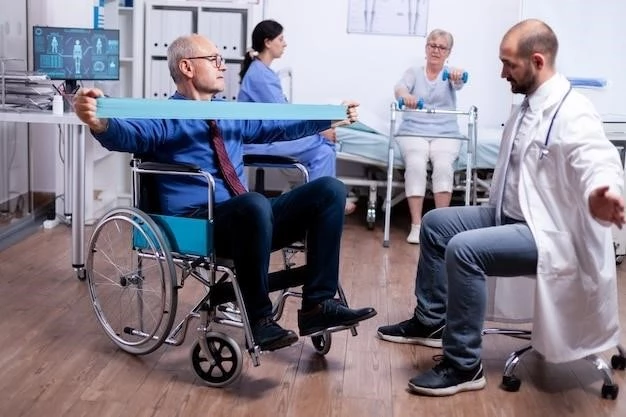Introduction
Spastic Paraplegia Type 5B is a rare subtype of hereditary spastic paraplegia‚ characterized by progressive neurodegeneration of corticospinal tract motor neurons due to recessive mutations in the CYP7B1 gene.
Overview of Spastic Paraplegia Type 5B
Spastic Paraplegia Type 5B‚ an autosomal recessive form of hereditary spastic paraplegia‚ is a rare neurodegenerative disorder characterized by progressive stiffness and contraction in the lower limbs due to recessive mutations in the CYP7B1 gene. This condition leads to the accumulation of neurotoxic oxysterols‚ resulting in a wide phenotypic spectrum. Individuals with SPG5B may present with pure spastic paraplegia or a complex phenotype‚ including various neurological manifestations. Genetic testing plays a crucial role in diagnosing this rare condition.

Clinical Features
Spastic Paraplegia Type 5B manifests as a progressive stiffness in the lower limbs due to mutations in the CYP7B1 gene‚ leading to a range of neurological symptoms such as spasticity and contractures.
Characteristics of Autosomal Recessive Spastic Paraplegia Type 5B
Spastic Paraplegia Type 5B‚ caused by recessive mutations in the CYP7B1 gene‚ presents with progressive lower limb stiffness‚ spasticity‚ and contractures. The condition’s phenotypic spectrum varies‚ affecting motor neurons and leading to diverse neurological manifestations.
Genetic Basis
Spastic Paraplegia Type 5B results from recessive mutations in the CYP7B1 gene‚ impacting corticospinal tract motor neurons and leading to neurodegeneration.
Understanding the Recessive Mutations in CYP7B1 Gene
Spastic Paraplegia Type 5B is caused by homozygous mutations in the CYP7B1 gene‚ leading to the accumulation of neurotoxic oxysterols and resulting in the progressive neurodegeneration of corticospinal tract motor neurons.
Diagnosis and Testing
Diagnosis of Spastic Paraplegia Type 5B involves genetic testing to identify recessive mutations in the CYP7B1 gene‚ crucial for confirming the condition’s presence.
Methods for Identifying Spastic Paraplegia Type 5B
Diagnosing SPG5B involves genetic testing to detect recessive mutations in the CYP7B1 gene‚ confirming the presence of this rare neurodegenerative disorder through specialized molecular analysis.
Management and Treatment
Management of Spastic Paraplegia Type 5B focuses on symptom alleviation through physical therapy‚ assistive devices‚ and medications to address spasticity and other associated conditions.
Approaches to Managing Symptoms of Spastic Paraplegia Type 5B
The management of Spastic Paraplegia Type 5B involves a multidisciplinary approach focusing on physical therapy to improve mobility‚ the use of assistive devices for daily activities‚ and medications to alleviate spasticity and other associated symptoms. Additionally‚ genetic counseling and support groups can aid in coping with the condition.
Research and Advancements
Spastic Paraplegia Type 5B‚ a rare form of hereditary spastic paraplegia‚ is an area of ongoing research aiming to understand the underlying genetic mutations and potential treatment strategies.
Current Studies on Spastic Paraplegia Type 5B
Recent research efforts focusing on Spastic Paraplegia Type 5B aim to delve into the genetic mechanisms underlying this rare disorder caused by recessive mutations in the CYP7B1 gene. These studies explore potential therapeutic interventions and management strategies to improve the quality of life for individuals affected by this condition.

Support and Resources
Organizations offer help to individuals with Spastic Paraplegia Type 5B‚ providing assistance‚ support‚ and resources for those affected by this rare neurodegenerative disorder.
Organizations Providing Assistance for Individuals with Spastic Paraplegia Type 5B
Support and resources for individuals with Spastic Paraplegia Type 5B include organizations offering assistance‚ guidance‚ and community for those impacted by this rare recessive neurodegenerative disorder. These organizations aim to provide valuable support and resources to improve the quality of life for individuals and families navigating SPG5B.
Hereditary Spastic Paraplegia Type 5B‚ a recessive neurodegenerative disorder‚ remains a focus of research for better understanding and potential therapeutic advancements to enhance patient outcomes and quality of life.
Summary of Hereditary Spastic Paraplegia Type 5B
Hereditary Spastic Paraplegia Type 5B‚ a rare form of recessive spastic paraplegia‚ is characterized by progressive lower limb stiffness and spasticity due to mutations in the CYP7B1 gene. Research aims to uncover genetic mechanisms and potential therapies for this neurodegenerative disorder.
